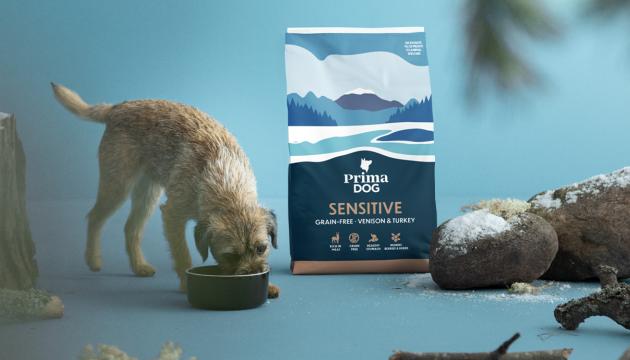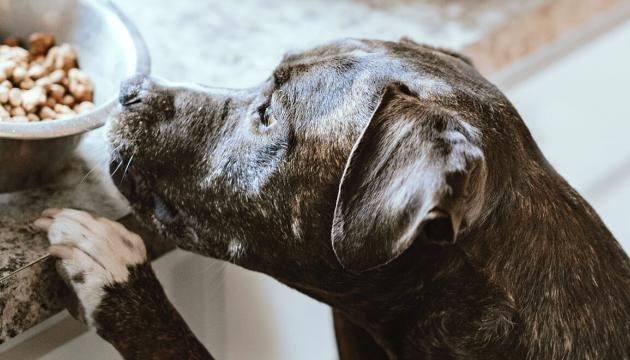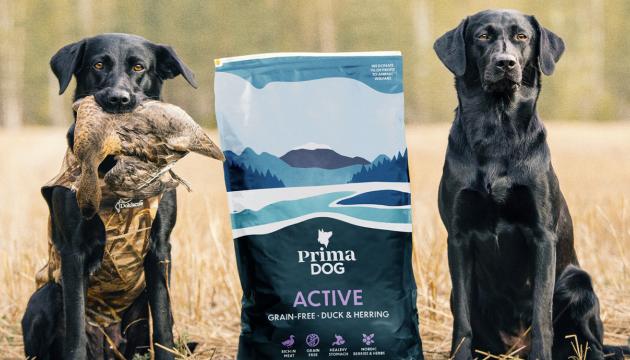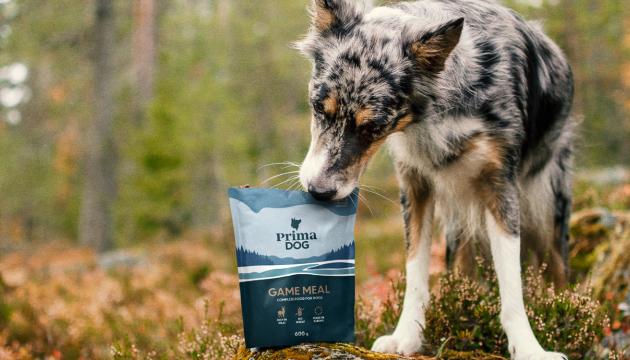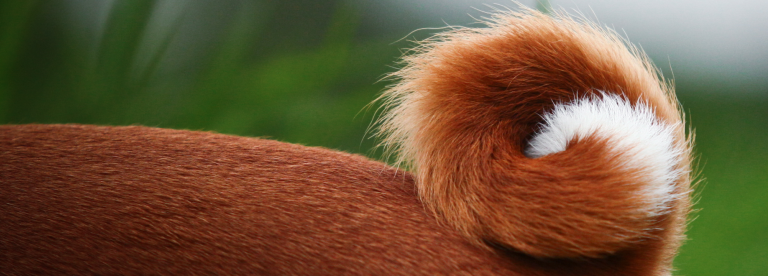

5 of the most common skin problems in dogs
Skin problems in dogs are pretty common, yet the state of a dog's skin and coat is a vital sign of the tail-waggers health. Have a look at this piece to discover the top five reasons behind skin problems in dogs and the best ways to sort them out. By the time you reach the end, you will also learn a few handy tips on preventing these problems with the right diet.
1. Dry skin
Quite a few of the skin problems in dogs are related to dry skin. This can make your furry friend itch, and too much scratching might lead to skin infections. Besides itching, dry skin can also lead to flaky skin, irritation, and even hair loss.
In the colder months, the chilly weather dries out the air, both outdoors and indoors, and this can have a knock-on effect on your dog's skin. Also, too much frolicking in water can dry the dog’s skin. On the flip side, it is not great for your dog's skin to be dirty either, so a good wash might be just what it needs.
Tips for sorting out your dog's dry skin
- Try to mix some oil supplement into your dog’s food.
- Do not go overboard with the baths.
- Make sure your wet pooch gets a good towel down.
Dog nutrition plays a big role in the health of a dog's skin and coat. Especially, Omega-3 and -6 fatty acids help keep your dog's skin supple and coat shiny. That is why all PrimaDog dry foods contain essential fatty acids. Check out PrimaDog dry foods.
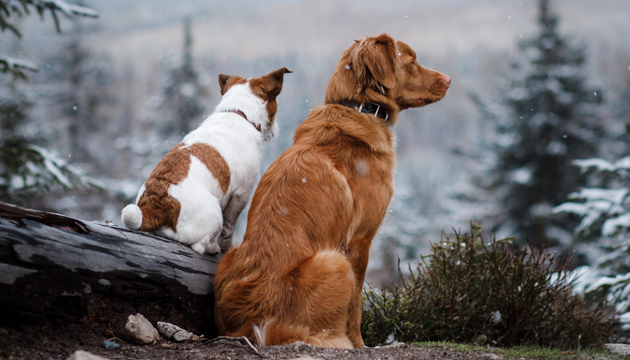
2. Itchy skin
Dogs get itchy and end up giving themselves a good scratch. Constant scratching can be a bother, as it might start off skin infections. It is normal for dogs to have a bit of a scratch occasionally. Sometimes, they might just be doing it because their coat is a bit mucky, and a good bath can sort that right out.
If your dog is scratching all the time, even to the point where it is sore, you might want to pop over to the vet pretty sharpish.
Why is my dog scratching so much? – Possible reasons for a dog’s itchy skin
Atopy: An itchy, inflammatory, and bothersome skin disease that is usually seen in young dogs. With an atopic dog you will need to follow the vet’s instructions how to treat it.
Food allergies: Dogs more often have a bit of a sensitivity to certain foods rather than a full-on food allergy, which is when the immune system gets involved. If your dog is having trouble with its stomach, it might be down to something in their food. But sometimes skin problems in dogs could be a sign of a food allergy.
Ectoparasites: The most common ectoparasites that make the dog scratch are lice and the dog flea, that both spread easily from one dog to another. You can get the medicines to get rid of external parasites from your vet.
Shampoos and soaps: Remember to stick to products made just for dogs when you are grooming the dog, as shampoos and soaps for humans can irritate the dog’s skin.
Chemicals: Those strong-smelling chemicals you use for cleaning around the house, sprucing up the furniture, or doing the laundry can be a bit rough on your dog's skin and cause irritation.
Medicine: Some medicines and vaccines can sometimes cause temporary skin symptoms and itching in your dog.
Sometimes, sorting out skin problems in dogs can be as simple as getting their diet right. Have a look into what kind of food is best for a dog with a sensitive stomach or skin.
3. Hair loss in dogs
A few things like the temperature outside and how long the days are can make a difference to when your dog sheds its fur. Dogs with thicker coats who live outside tend to shed a lot, especially in the spring when the days get longer. Those indoor dogs who are always cosy and warm might find themselves shedding all year round.
Also, female dogs can shed a bit differently because of their hormones, especially with the seasons changing. If your dog has been under anaesthetic recently, say for an operation, that might lead to a bit more shedding too. Sometimes, all this shedding can be a bit itchy for the dog. So, it is a good idea to give the dog a regular brush, particularly when it is shedding a lot.
It is handy to get to know what is normal for your dog in terms of hair loss. This way, if things start to look a bit different from the usual, you will spot it straight away. But remember, if your dog’s hair loss seems a bit out of the ordinary, it is best to have a chat with your vet.
Spotting the signs – Unusual dog hair loss and what to look out for
- The coat becomes dry and brittle
- Hair falls out unevenly
- Hairless patches on the dog's skin
- Alongside hair loss, the dog has other skin problems, such as skin infections
- The dog is sensitive to touch in areas where a lot of hair has fallen out
- Health-related causes behind hair loss
- Atopy and other allergies
- Hormonal imbalances
- External or internal parasites, such as mites
- Bacterial or fungal infections
- Certain illnesses, such as hypothyroidism or Cushing's disease
- Stress, which can manifest as hair loss sometime after the stressful event
4. Flaky skin
Dogs can get flaky skin from different skin issues. Dandruff happens when dead skin cells shed and clump together. A bit of dandruff is usually normal, but if your dog has got quite a bit of it, it is always wise to figure out what is causing it.
Causes of dog skin flaking
- Dry skin
- Skin irritation and rashes
- Skin infections
- Parasites, such as Cheyletiella mites that cause “walking dandruff”
- Allergies
- Stress and frightening or distressing situations
How to treat a dog’s flaky skin
If it is down to dry skin, you will want to treat the skin first. Getting on top of the dandruff usually helps with the dog's itchiness.
- Dandruff shampoos for dogs can help.
- Add Omega-3 fatty acids to your dog's diet, for example from salmon oil.
- If parasites are the troublemakers, your vet will have the right treatment.
If the dandruff is not clearing up with what you are doing at home, it is best to have a word with your vet.
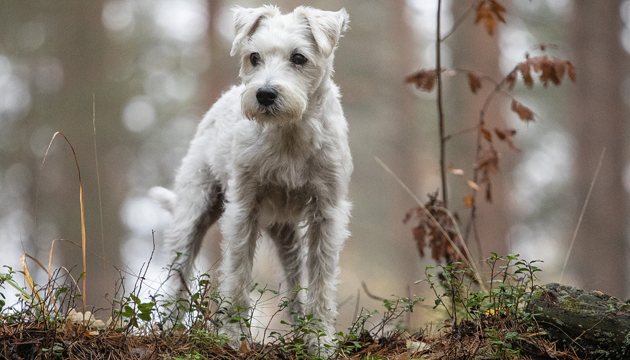
5. Hot spot
Some dogs are real water lovers who would want to spend all their time splashing around in the lake during the summer. Unfortunately, these water-loving tail-waggers are at risk of getting acute moist dermatitis, a wet skin infection known as a hot spot. This is because damp and soggy skin creates the perfect conditions for bacteria. Also, having a thick undercoat makes the dog more prone to hot spots.
Hot spots are red, swollen, and purulent-looking areas on a dog's skin. If your dog has a thick coat, it can sneakily cover up the hot spot, making it tricky to notice at first. But hot spots can get pretty big, fast – think the size of your hand. Your dog might end up licking or scratching at the sore spot.
How to treat hot spot
- First up, you will want to shave the fur off and around the rash to give the skin some air. If your dog's skin is super sensitive, it might be best to have the vet do the shaving, possibly with your dog sedated.
- Then, clean the sore bit with a dog-friendly, non-stingy disinfectant a few times a day.
- Giving your dog a wash with an antibacterial medicated shampoo can help the dog feel a bit better.
- If needed, pop a protective collar on your dog to stop it from licking at the inflamed skin.
And if the sore spot gets worse or does not start to heal with what you are doing at home, it is time to take your dog to the vet. Prolonged inflammation can be treated with antibiotics and cortisone, for example. If hot spots keep coming back, the cause for them must be solved by a vet.
Hot spot prevention
- Cut your dog's hair short at the spots most likely to pick up an infection.
- If your dog is thick coated water monster who loves to swim all summer, cut the coat thinner for at least the summer season.
- Always dry your dog's coat thoroughly after getting wet.
Do you know how to clean the dog’s ears, spruce up its coat, and clip the nails? Check out our tips for some basic dog grooming know-how.
Sorting out skin problems in dogs with the right diet
In some cases, skin problems in dogs can be kept at bay with a varied and balanced diet, as not getting enough of certain nutrients can show up first in the dog’s skin and coat.
Make sure your dog is getting enough protein from the diet. Dog food should contain about 25% of protein, maybe even more if needed. Also, most of the protein must be animal-based, since meat or fish is the base of dog’s nutrition. Not enough protein can really affect the health of the dog’s coat.
The dog’s coat needs biotin, sulphur and zinc, because it is mostly made of a substance called keratin that requires these nutrients to build up. So, a shabby coat could be down to a lack of these three nutrients. Biotin, zinc, and sulphur mostly come from meat.
Ensure the dog’s zinc intake. If your dog is missing zinc, you might notice its coat thinning or hair falling out. The dog may also have bald patches around its eyes and hard, bald spots on the front legs near the elbow. Zinc works best with a bit of Vitamin A, which also helps keep the coat in good nick. A great source of Vitamin A for dogs is liver.
Omega-3 and -6 fatty acids are super important for your dog's skin and coat. Especially if the dog has dry skin, a boost of these fats can be a big help.
Is your dog getting its fill of water? A dull, dry coat might be a sign the dog is not sipping as much water as it should. So, keep an eye on your dog’s water intake daily. And for a bit of extra hydration, why not treat your dog to some delicious wet food from PrimaDog. Explore the products.

